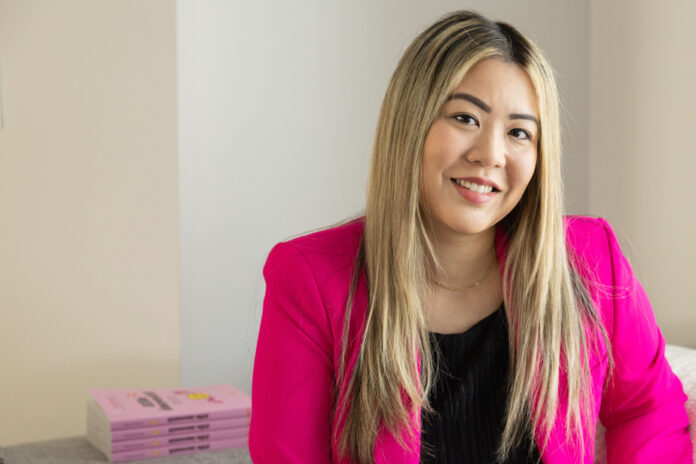Some people “get fired up” about money as early as adolescence. Others do it in their 40s, 50s, or even later. Some never do.
For Karman Kong, a lawyer and author of the new book She Invests – Building Wealth Through the Stock Market, it was a few years ago, at the age of 28, when she received an unexpected sum of money.
“I could have used it to go south or change vehicles, but that wasn’t what I wanted,” she said. I wanted to be responsible and do the “right” thing with that money. »
What was this “good” thing? The lawyer didn’t know, so she set about doing what came naturally to her: reading.
Karman estimates that he has read hundreds of books on investing, money and personal finance. “I’m an intense person,” she said.
What she learned changed her life.
“I never understood that money could work for me. »
Until then, Karman lived paycheck to paycheck. Travel, clothes, restaurants… The money that entered his account came out at the rate of his needs, whims and desires.
During this period, ordering groceries for two for a week cost him $60. “And we ate well,” she said. This was before the inflation spurt…”
The lawyer also went three years without buying a single item of clothing. Every day outside of work, she wore the same outfit: black leggings and a black t-shirt.
“I had my wardrobe full of them. The funny thing is that it caused no comment around me. It made me realize that we often give too much importance to what other people think of us, when in fact, people don’t really think of us…”
It was her new passion for personal finance that prompted her to launch two personal projects: the popular Instagram page She’s been investing since 2021, and then, this month, launching her book.
Under a “candy pink” identity filled with emojis and humor, She invests is full of practical advice on saving and investing. Karman explains how to manage your finances, what are good practices in stock market investment, how to invest in exchange-traded funds (ETFs), what is the role of RRSPs, TFSAs, etc.
While the book is aimed at the general public, it specifically targets women, who have historically not been well served by the transmission of financial knowledge, says the author.
After pushing the boundaries of his comfort zone, Karman found a balance between saving and spending.
Today, she invests 22% of her after-tax salary, in addition to the money that is deducted from her pay automatically to fund her retirement plan.
The 33-year-old Karman believes she will achieve financial freedom somewhere in her 40s. But she notes that this is not a goal, and that saving has simply become a habit.
“I love my job,” says the one who keeps 75% of her investments with an advisor and 25% that she manages herself in her discount brokerage account.
To those who put off matters related to personal finances and investing in the stock market, Karman advises not to let fear prevail.
“People think it’s so complicated it’s not for them. That was what I thought at the time too. But I realized that the basic concepts are quite simple after all. You just have to overcome your fear. »
Last week, I asked you about your savings habits.
Alain writes:
“It took me a good fifteen years to reach my first $100,000 in investments; twenty for the $500,000, and… five to seven years for the first million! At some point, it speeds up! »
William writes:
“I got into the habit of saving when I was young in two ways: I knew the value of money because I didn’t have it, and I had the will to never depend on anyone. maybe, not even from a boss. »
Benoit writes:
“Our education is deficient when it comes to savings and also investments. We were brought up to be told that money was dirty and I think that marked the course of our lives and more particularly the first years of our adult life. Those where we start to work and collect money. »
Francis writes:
“I used to save early. My only regret is that after contributing to my RRSPs at 18% per year and accumulating an emergency cushion of $30,000 in my TFSA, I didn’t know what to do with my surplus and I was looking for expenses even though it wasn’t my type. It was only when I discovered the FIRE [financial independence] movement that I understood that we could exceed our RRSP contributions by using the TFSA or non-registered investments to invest even more in order to be able to reach an early retirement. Nobody ever says that! »















